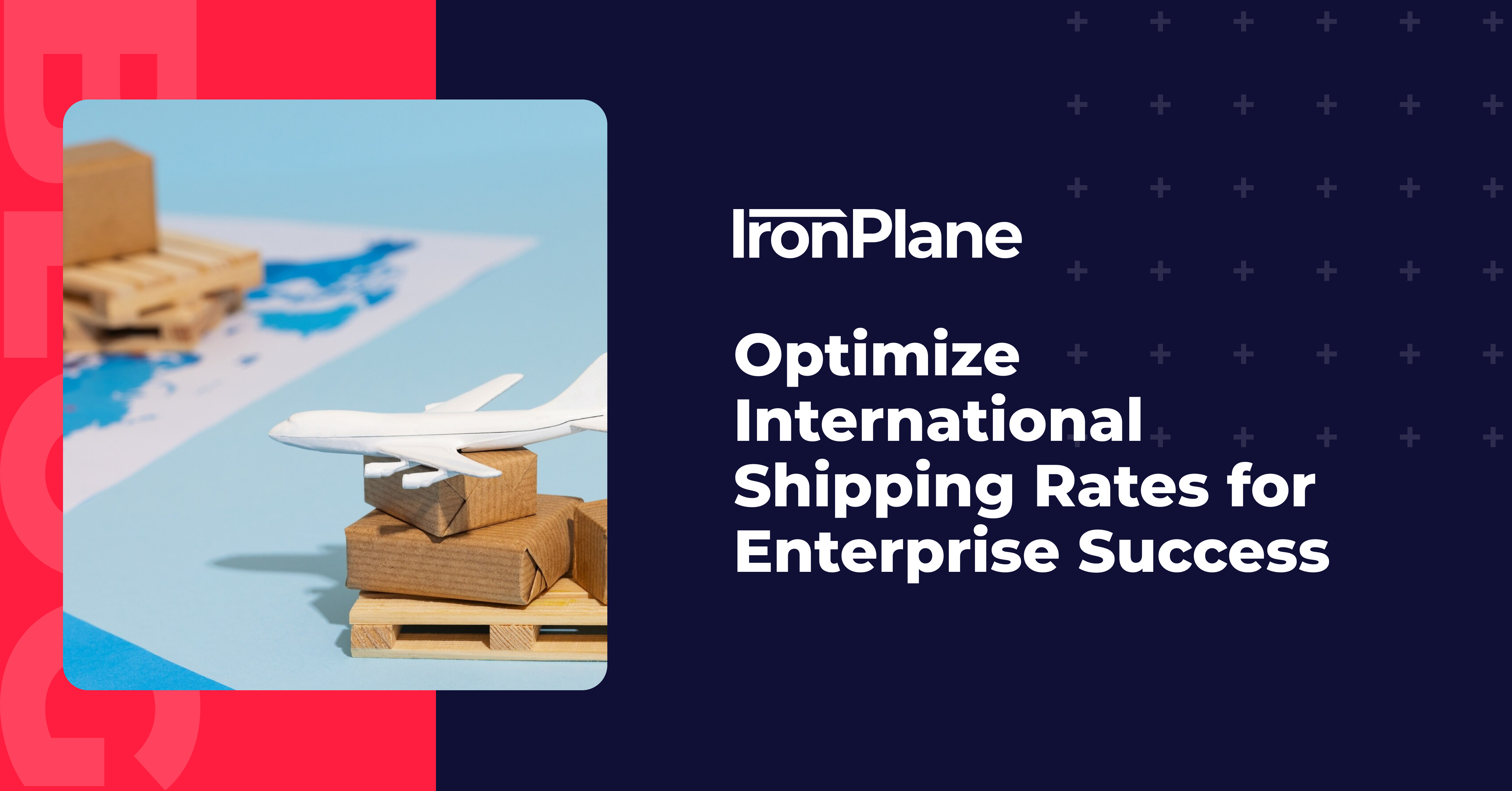Everything You Need to Know About Drop Shipping
In this article we will share with you everything you need to know about Drop Shipping. Stay tuned.
5 min read
 Jeff Zoldy
:
December 4, 2024
Jeff Zoldy
:
December 4, 2024

In today's global marketplace, enterprise retailers face the challenge of managing international shipping costs while meeting customer expectations. Let's explore how to improve your shipping rates and increase your profits, keeping in mind the complexities of selling across borders and the changing world of shipping.
| Aspect | Insight |
|---|---|
| Carrier Negotiation | Use high shipping volumes to get better rates |
| Technology Integration | Use software to compare rates from different carriers |
| Packaging Strategy | Use smaller packages to reduce costs |
| Customs Compliance | Know international rules to avoid delays |
| Data Analysis | Keep looking at shipping data to find ways to improve |
International shipping is complicated. Many things affect costs and how well it works. Things like gas prices and customs rules can make shipping tricky. Online shopping has made it possible to sell to people all over the world, but it also means dealing with different currencies and what customers in different countries expect.
Big retailers need to think about things like how heavy packages are, their size, and how fast they need to be delivered when trying to get the best shipping rates. ePacket shipping can be cheap for small items, but bigger shipments might need different plans. Also, busy times of year, world events, and environmental rules can all change shipping costs and times, so retailers need to be ready to change their shipping plans.
By using these strategies, big retailers can really lower their international shipping costs. Let's look closer at each approach, seeing how they can work for different types of businesses and products.
Don't just accept the regular prices. As a big retailer, you ship a lot, so you can ask for better deals from shipping companies. Compare prices from different carriers and use this info to get better terms. Think about how long shipping takes, if you can track packages, and if insurance is included when you're looking at carriers. Remember, the cheapest option isn't always the best; you also need to think about if they're reliable and have good customer service.
Connecting your online store with software that works with many carriers lets you automatically compare prices and pick the cheapest option for each package. These systems can also make shipping easier by automatically creating labels, updating tracking, and handling customs paperwork. Look for software that can check prices in real-time and work with your inventory system to make order processing smooth.
The size of your packages can really affect shipping costs. Use packaging that fits your products well to reduce empty space and lower dimensional weight charges. This saves on shipping and is also good for the environment, which fits with eco-friendly online shopping practices. Think about getting custom packaging that's made just for your products. This could include boxes that can change size, padded envelopes, or even flat packages that take up less space but still protect your products.
Many shipping companies offer discounts when you ship a lot at once. Try to group shipments together when you can to save money. This works especially well for businesses selling to other businesses. Consider sending orders to the same area all at once for international shipments. This can help you reach the amount needed for better prices. Also, look into using freight forwarding services for big business-to-business shipments, which can save a lot of money on large international orders.
For shipping lots of packages, think about zone skipping. This means taking packages to a distribution center closer to where they're going before giving them to the local carrier. It takes more planning, but it can save a lot of money on long-distance shipping. Zone skipping works well for stores that know their shipping patterns or have busy seasons. You might need to work with shipping companies or set up your own distribution centers in different areas, but it can save a lot of money in the long run if you ship a lot.
Technology is really important for getting the best international shipping rates. Adobe Commerce (Magento) has strong features for handling complicated shipping situations. These include advanced rules for shipping, managing inventory from multiple places, and the ability to work with outside shipping companies. Use these features to create smart shipping strategies that can change based on different types of products, groups of customers, and where you're shipping to.
Using a Progressive Web App (PWA) storefront can make shipping better for customers while giving you more control over rates and options. PWAs can load faster and work offline, which is great for customers in places with bad internet. This technology can also help calculate shipping costs more accurately in real-time and make it easier for customers to track their international shipments on their phones.
International shipping involves dealing with complex customs rules. Stay up-to-date on import/export laws, duties, and taxes for the countries you ship to. Think about working with a customs broker to make sure you follow all the rules and avoid expensive delays. Learn about Incoterms (International Commercial Terms) and how they affect your shipping costs and responsibilities. Set up systems to accurately fill out and send electronic customs declarations, reducing the chance of shipments getting stuck at borders.
| Metric | Value | Status |
|---|---|---|
| Average Click-to-Door Delivery Time (US) | 4.87 days | Good |
| Brands Planning to Add New Sales Channel | Over 70% | Growing |
| Brands Planning to Ship to New Countries | 56% | Expanding |
| Brands Offering Site-Wide Free Domestic Shipping | 25% | Room for Growth |
| Consumers Willing to Pay More for Same-Day Delivery | 61% | High Demand |
The world of international shipping is always changing. Stay ahead by:
By using these strategies and the right technology, big retailers can really improve their international shipping rates. This not only cuts costs but also makes customers happier and helps you compete better in the global market. Think about using pricing models that change shipping rates based on things happening right now, like how busy carriers are, fuel prices, and seasonal demand.
Making international shipping rates better is something you have to keep working on. It needs attention to detail, being good with technology, and being ready to change. By talking with carriers, using technology, and staying informed about what's happening in the industry, big retailers can create a shipping plan that balances being cost-effective with making customers happy. Remember to regularly look at and update your shipping policies to make sure they fit with your business goals and what customers expect.
Remember, the goal isn't just to cut costs but to create a smooth, efficient shipping experience that helps your overall business goals. With the right approach, international shipping can become something that gives you an edge over competitors rather than just being a logistical challenge. Think about offering different shipping options to suit different customer preferences, from cheaper slower services to more expensive faster options.
As you deal with the complexities of international shipping, think about working with experienced online store development companies like IronPlane. Their knowledge of Adobe Commerce and custom development can help you set up strong shipping solutions made just for your big business needs. These partnerships can give you valuable insights into what works best in the industry and help you stay ahead of new technology in online store shipping.
By focusing on these key areas and always improving your approach, you'll be in a good position to optimize your international shipping rates and be successful in the global market. Remember that shipping isn't just about costs; it's a chance to make customers happier and build loyalty to your brand. Invest in creating a shipping strategy that fits with your brand values and meets the changing expectations of your international customers.

In this article we will share with you everything you need to know about Drop Shipping. Stay tuned.

Guide to ePacket Shipping which makes buying products from overseas companies, including China, easier.

Explore why shipping and returns are crucial to the furniture buying process and discover essential tools and integrations to enhance the user experience.